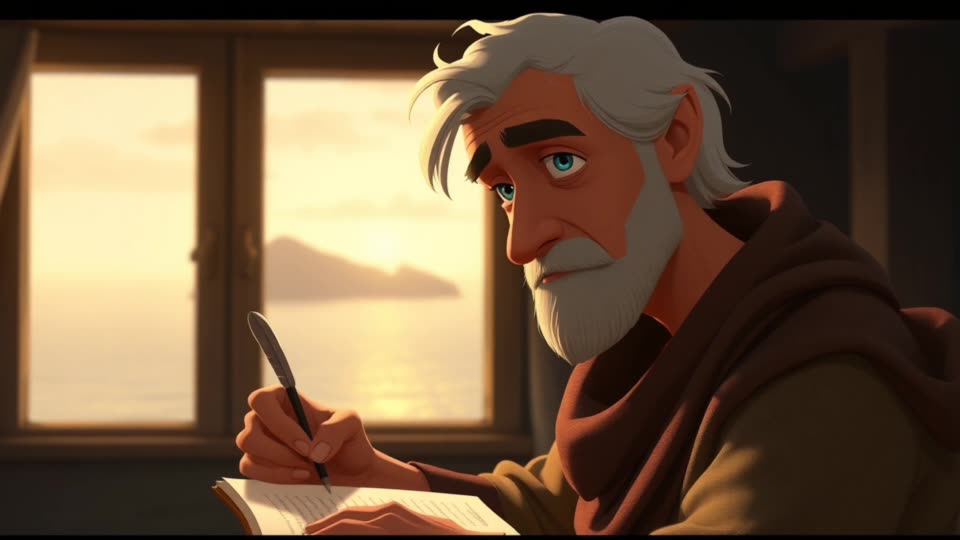

a Pole of Jupiter, as seen on Juno mission
Early science results from NASA’s Juno mission to Jupiter portray the largest planet in our solar system as a complex, gigantic, turbulent world, with Earth-sized polar cyclones, plunging storm systems that travel deep into the heart of the gas giant, and a mammoth, lumpy magnetic field that may indicate it was generated closer to the planet’s surface than previously thought.
“We are excited to share these early discoveries, which help us better understand what makes Jupiter so fascinating,” said Diane Brown, Juno program executive at NASA Headquarters in Washington. "It was a long trip to get to Jupiter, but these first results already demonstrate it was well worth the journey.”
Juno launched on Aug. 5, 2011, entering Jupiter’s orbit on July 4, 2016. The findings from the first data-collection pass, which flew within about 2,600 miles (4,200 kilometers) of Jupiter's swirling cloud tops on Aug. 27, are being published this week in two papers in the journal Science, as well as 44 papers in Geophysical Research Letters.
“We knew, going in, that Jupiter would throw us some curves,” said Scott Bolton, Juno principal investigator from the Southwest Research Institute in San Antonio. “But now that we are here we are finding that Jupiter can throw the heat, as well as knuckleballs and sliders. There is so much going on here that we didn’t expect that we have had to take a step back and begin to rethink of this as a whole new Jupiter.”
Among the findings that challenge assumptions are those provided by Juno’s imager, JunoCam. The images show both of Jupiter's poles are covered in Earth-sized swirling storms that are densely clustered and rubbing together.
“We're puzzled as to how they could be formed, how stable the configuration is, and why Jupiter’s north pole doesn't look like the south pole,” said Bolton. “We're questioning whether this is a dynamic system, and are we seeing just one stage, and over the next year, we're going to watch it disappear, or is this a stable configuration and these storms are circulating around one another?”
Another surprise comes from Juno’s Microwave Radiometer (MWR), which samples the thermal microwave radiation from Jupiter’s atmosphere, from the top of the ammonia clouds to deep within its atmosphere. The MWR data indicates that Jupiter’s iconic belts and zones are mysterious, with the belt near the equator penetrating all the way down, while the belts and zones at other latitudes seem to evolve to other structures. The data suggest the ammonia is quite variable and continues to increase as far down as we can see with MWR, which is a few hundred miles or kilometers.
Prior to the Juno mission, it was known that Jupiter had the most intense magnetic field in the solar system. Measurements of the massive planet’s magnetosphere, from Juno’s magnetometer investigation (MAG), indicate that Jupiter’s magnetic field is even stronger than models expected, and more irregular in shape. MAG data indicates the magnetic field greatly exceeded expectations at 7.766 Gauss, about 10 times stronger than the strongest magnetic field found on Earth.
“Juno is giving us a view of the magnetic field close to Jupiter that we’ve never had before,” said Jack Connerney, Juno deputy principal investigator and the lead for the mission’s magnetic field investigation at NASA's Goddard Space Flight Center in Greenbelt, Maryland. “Already we see that the magnetic field looks lumpy: it is stronger in some places and weaker in others. This uneven distribution suggests that the field might be generated by dynamo action closer to the surface, above the layer of metallic hydrogen. Every flyby we execute gets us closer to determining where and how Jupiter’s dynamo works.”
Juno also is designed to study the polar magnetosphere and the origin of Jupiter's powerful auroras—its northern and southern lights. These auroral emissions are caused by particles that pick up energy, slamming into atmospheric molecules. Juno’s initial observations indicate that the process seems to work differently at Jupiter than at Earth.
Juno is in a polar orbit around Jupiter, and the majority of each orbit is spent well away from the gas giant. But, once every 53 days, its trajectory approaches Jupiter from above its north pole, where it begins a two-hour transit (from pole to pole) flying north to south with its eight science instruments collecting data and its JunoCam public outreach camera snapping pictures. The download of six megabytes of data collected during the transit can take 1.5 days.
“Every 53 days, we go screaming by Jupiter, get doused by a fire hose of Jovian science, and there is always something new,” said Bolton. “On our next flyby on July 11, we will fly directly over one of the most iconic features in the entire solar system -- one that every school kid knows -- Jupiter’s Great Red Spot. If anybody is going to get to the bottom of what is going on below those mammoth swirling crimson cloud tops, it’s Juno and her cloud-piercing science instruments.”
NASA's Jet Propulsion Laboratory in Pasadena, California, manages the Juno mission for NASA. The principal investigator is Scott Bolton of the Southwest Research Institute in San Antonio. The Juno mission is part of the New Frontiers Program managed by NASA's Marshall Space Flight Center in Huntsville, Alabama, for the agency’s Science Mission Directorate. Lockheed Martin Space Systems, in Denver, built the spacecraft.

Jingle bell, jingle bell, jingle bell rock
Jingle bells swing and jingle bells ring
Snowin' and blowin' up bushels of fun
Now the jingle hop has begun
Jingle bell, jingle bell, jingle bell rock
Jingle bells chime in jingle bell time
Dancin' and prancin' in Jingle Bell Square
In the frosty air
What a bright time, it's the right time
To rock the night away
Jingle bell time is a swell time
To go glidin' in a one-horse sleigh
Giddy-up jingle horse, pick up your feet
Jingle around the clock
Mix and a-mingle in the jinglin' feet
That's the jingle bell rock
Jingle bell, jingle bell, jingle bell rock
Jingle bell chime in jingle bell time
Dancin' and prancin' in Jingle Bell Square
In the frosty air
What a bright time, it's the right time
To rock the night away
Jingle bell time is a swell time
To go glidin' in a one-horse sleigh
Giddy-up jingle horse, pick up your feet
Jingle around the clock
Mix and a-mingle in the jinglin' feet
That's the jingle bell
That's the jingle bell
That's the jingle...
David Daniel Ball calls himself the Conservative Voice.
I'm a teacher with three decades experience teaching math to high school kids.I also work with first graders and kids in between first grade and high school. I know the legends of why Hypatia's dad is remembered through his contribution to Math theory. And I know the legend of why followers of Godel had thought he had disproved God's existence.
I'm not a preacher, but I am a Christian who has written over 28 books all of which include some reference to my faith. Twelve blog books on world history and current affairs, detailing world events , births and marriages on each day of the year, organised by month. Twelve books on the background to and history of Bible Quotes. One Bible quote per day for a year. An intro to a science fiction series I'm planning, post apocalyptic cyber punk. An autobiography with short story collections.
I'm known in Australia for my failure as a whistleblower over the negligence death of a school boy. ...
The Good Shepherd Blues
(John’s Song – Ephesus, sometime around AD 95)
(Slow 12-bar blues in A minor – play it like an old man who’s seen too much but still got fire in his eyes)
Verse 1
I am the disciple that Jesus loved, they say
Leaned on His ...

Beethoven’s Last Blues (John’s Gospel in D-minor)
🎹 Turn the lights down low.
Grab your oldest headphones, your darkest room, and the heaviest heart you’ve got.
Play “Beethoven’s Last Blues” once—at the volume you’re scared to use.
Let it crawl inside the silence you carry.
When the final low D fades into nothing, don’t move.
Stay there in the dark until you feel something rise up that has no sound.
That’s the Word becoming flesh in you.
That’s joy breaking through deafness.
Now pass it on.
Send it to the one who’s lost their music.
Tell them: the conversation hasn’t ended.
The Ninth is still coming.
And it’s coming for them.
Play it loud enough for the deaf to hear.
Because joy was made to outrun silence.
#BeethovensLastBlues #TheWordBecameFlesh
Woke up this mornin’, world gone black as coal,
Ears full of silence, Lord, it done swallowed my soul.
Fingers still dancin’ on keys that don’t speak no more,
Hammer and string keep lyin’, like a lover walkin’...

Stand with the Blue: Honor Nicola Cotton, Learn from Redfern
Imagine a young officer, full of promise, gunned down in broad daylight—her only "crime" was stepping up to protect her community. That's the heartbreaking reality of Nicola Cotton, the 24-year-old New Orleans policewoman murdered in 2008 while trying to arrest a suspect. Eight weeks pregnant, she was shot 15 times with her own service weapon by a man with a history of severe mental illness who had been prematurely released from care. Her death wasn't just a loss for Louisiana; it exposed raw cracks in our systems—mental health failures, under-resourced patrols, and the relentless dangers officers face in high-risk neighborhoods.
Now fast-forward to Sydney's Redfern riots of 2004, half a world away. A 17-year-old Indigenous teen, TJ Hickey, dies in a tragic bike accident during what police called a routine patrol—but his community saw it as yet another flashpoint in a cycle of distrust, poverty, and ...


